Live Edge Wood Slabs are a beautiful and great way to add a more natural and original design to any environment. They make a statement and serve a variety of purposes including table tops, bar counters, benches, conference tables and dining tables. Each slab varies in color, character and wood grain. This means no two slabs are the same, making each slab one of a kind .
With a Live Edge Wood Slab, you can expect that the live edge design, it’s one of a kind nature and captivating shapes and textures will impress guests and frequent users alike.

Slabs are wood in its rawest form. With that raw form comes a uniqueness and beauty that other choices cannot match. Combined with a strong base the slab provides a great surface for meals, seating and meetings. The strength of wood slabs show the quality of a material that will last for years to come.
Each slab is unique and filled with character. Slabs most often contain wood defects such as checks, knots, and holes that contribute to the unique look in each slab. When treated skillfully, these flaws do not pose a problem but add to the overall beauty. The staff at Maxsun strive to find a great slab for your furnishing needs.
Ordering:

Slabs are usually custom ordered as the sizes are typically determined by what is available from mills. You usually first decide what the intended use is and then choose the type of wood species. For example, if what you are looking for is a large communal table you would want a slab approximately 30-36” in width and 72-96” in length, and perhaps you prefer the look of walnut. We would then search through our resources and see what fits your request. Typically the wider and larger the slabs are, the bigger, older and rarer the tree was – and thus more highly priced. The staff at Maxsun furnishings will help you choose the best wood type to meet your preferences.
Tree Species for Wood Slabs:
We work with a myriad of sources for our slabs to best suit your needs and specifications. Here are some species of trees native to North America and what the slabs look like before and after finishing.
Oak:
![Layout_Oak[1]](http://www.maxsungroup.com/wp-content/uploads/2016/05/Layout_Oak1-300x115.jpg)
There are over 600 different species of trees of the oak family which makes oak one of the most prolific, cost effective yet durable types of wood. The most common species of oak is the red oak which is light brown in color with a shade of red in hue. Oaks are straight grained which makes it easy to cut along as well as being easy to glue, stain, and finish.This is a universally favored type of wood that can work well for any purpose
Pine:

Pine is the most abundant type of wood in North America which possesses a grain structure that is straight grained and shows growth rings in dark bands throughout the wood. The color of pine ranges from pale yellow to light reddish brown. Despite the pliability of pinewood, it is remarkably stable and resists general seasonal movement. Pine Wood Slabs can add a great deal of character and texture for any table, bench or counter-top.
Beech:

Beech is a type of wood that most woodworkers don’t appreciate, in spite of its strength and hardness while maintaining a great value. The color of beech wood is pale cream with a hint of pink or brown hue. The wood-grain of beech is straight grain with fine to medium texture and some medium sheen. Its utility, affordability and soft hue make it a prime choice for a wood slab for furnishings like tables and benches.
Maple:

Maple is a prime choice of wood for woodworkers and craftsman alike. The color of maple is a pale cream color but darkens when exposed to light, which can turn into a reddish brown with light exposure. The grain texture of maple is fine, even and straight but can be very wavy depending on a variety of factors. Maple can be a great choice as a slab as it adds a rich texture compared to more domestic wood types.
Cherry:

Cherry is a well-rounded tree species in that it is more workable than maple and oak, and show more vibrant colors and grain patterns than most domestic species. Black Cherry, the most common in North America has a pale pinkish yellow hue once cut, but the color changes rapidly into a reddish brown once exposed to sunlight. The grain for black cherry is normally straight and easy to work although there are figured pieces with grain patterns on occasion.The color, variety and texture of Cherry wood can make it exceptional for a table as you can see above.
Walnut:

The characteristics of walnut are its rich color but doesn’t provide much wood, making it rarer and more expensive. The most common species is black walnut which colors run from dark tan to deep chocolate brown and sometimes possesses purple and greenish hues. The grain texture for Black walnut is straight grained and can be irregular with a medium texture and moderate luster. Walnut is the darkest texture of domestic trees and its rich dark color helps it stand out significantly.
Concluded Projects: Ketch Brew House
The wood slab tables at The Ketch Brew House (located in the Financial District in New York City) were provided by Maxsun Furnishings. They were milled and flattened at our warehouse. The request was for several Beech wood tables with the dimensions of 20” and 72” inches. The results are shown above.

In conclusion, a wood slab is a great piece to have at your home, office or restaurant. It comes in various types of woods and textures and adds a rustic yet modern style that will impress users and guests alike. If you have any further questions, please don’t hesitate to call or email us.
Our phone number is 718-418-6800 or email us at sales@maxsungroup.com.





 Continued in part II
Continued in part II 
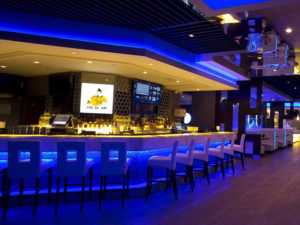
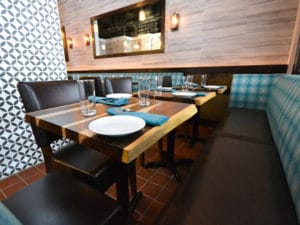
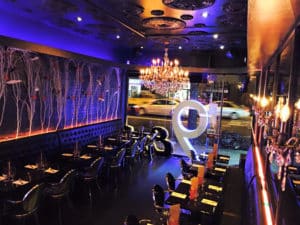
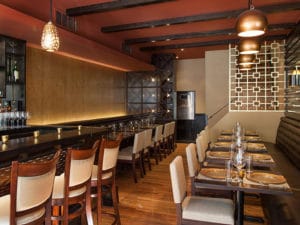



 The “L” – Simple wrap around banquette. Can be done standard or radius.
The “L” – Simple wrap around banquette. Can be done standard or radius. “U” shape. Can be done in square or radius styles.
“U” shape. Can be done in square or radius styles. ¾ Corner Full Round – Full radius circle booth for the corner. Must use a round table.
¾ Corner Full Round – Full radius circle booth for the corner. Must use a round table. ¾ Corner Standard – ¾ corner booth made of right angles.
¾ Corner Standard – ¾ corner booth made of right angles. Custom – Most of the styles can be completely customized to fit any odd angle wall or space. Unique shapes can also be done.
Custom – Most of the styles can be completely customized to fit any odd angle wall or space. Unique shapes can also be done.
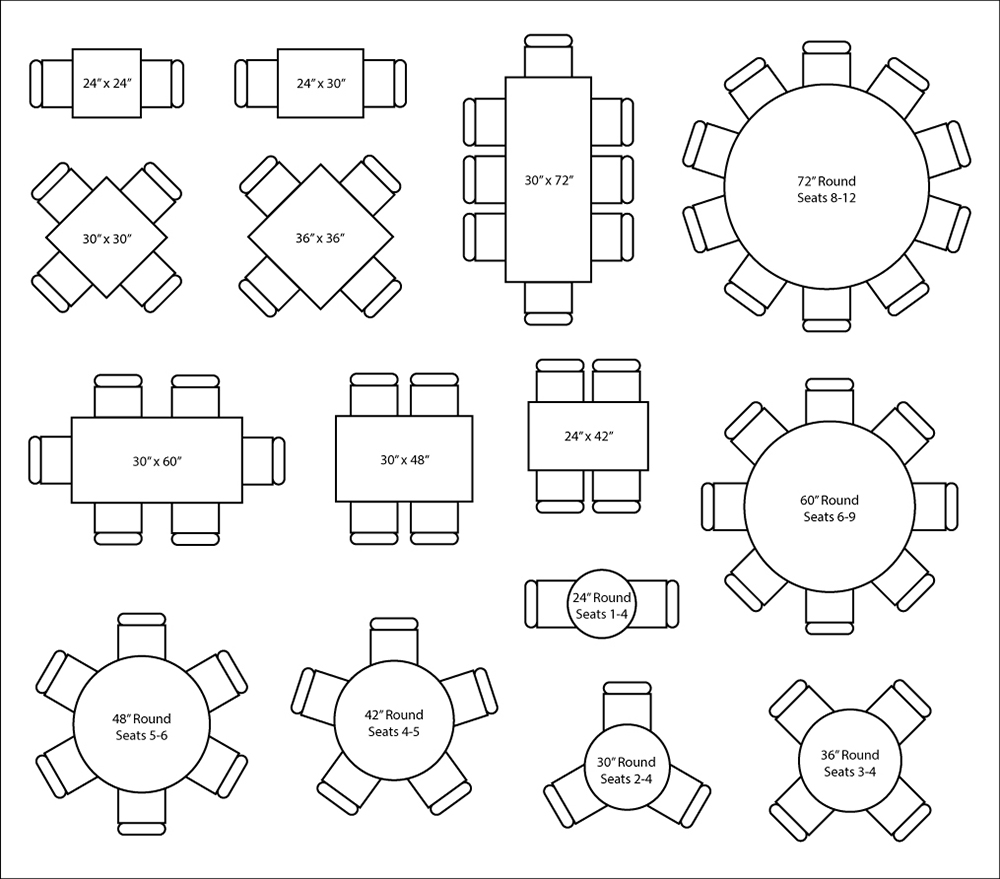
 Allow 18” from edge of table to chair back, and 24-30” for lateral seating.
Allow 18” from edge of table to chair back, and 24-30” for lateral seating.
 Allow 42” between edges of square tables, This leaves 6“ of space for chairs to push out.
Allow 42” between edges of square tables, This leaves 6“ of space for chairs to push out.
 Allow 24” between corners of diagonal tables.
The standard table space per quest is 300 square inches, but because of the variety of restaurants out there, that number will vary as well if you want your guest to dine comfortably and have a great experience. For example, cafeterias employ trays which confine the meal to that space, whereas restaurants may need additional space for utensils and extra plates. Below we have mapped out the general seating accommodations of various table sizes.
Allow 24” between corners of diagonal tables.
The standard table space per quest is 300 square inches, but because of the variety of restaurants out there, that number will vary as well if you want your guest to dine comfortably and have a great experience. For example, cafeterias employ trays which confine the meal to that space, whereas restaurants may need additional space for utensils and extra plates. Below we have mapped out the general seating accommodations of various table sizes.
 Although booth seating can be a bit more expensive, it allows for a larger number of seats per square foot.
Although booth seating can be a bit more expensive, it allows for a larger number of seats per square foot. 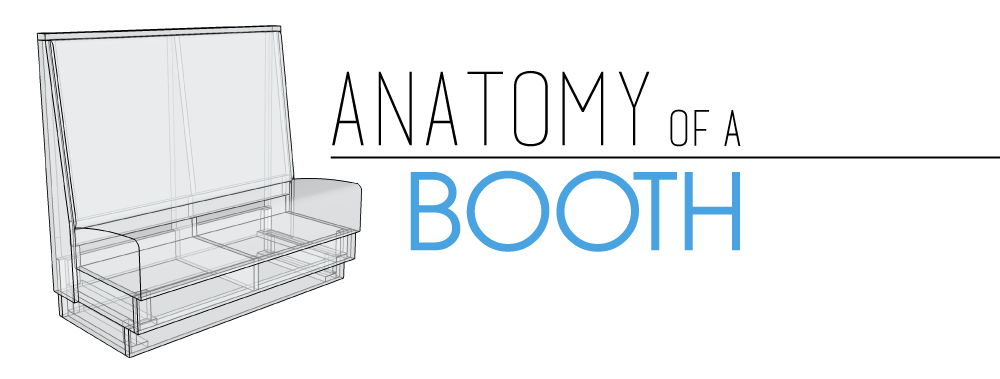
 Bar Height
Bar Height


























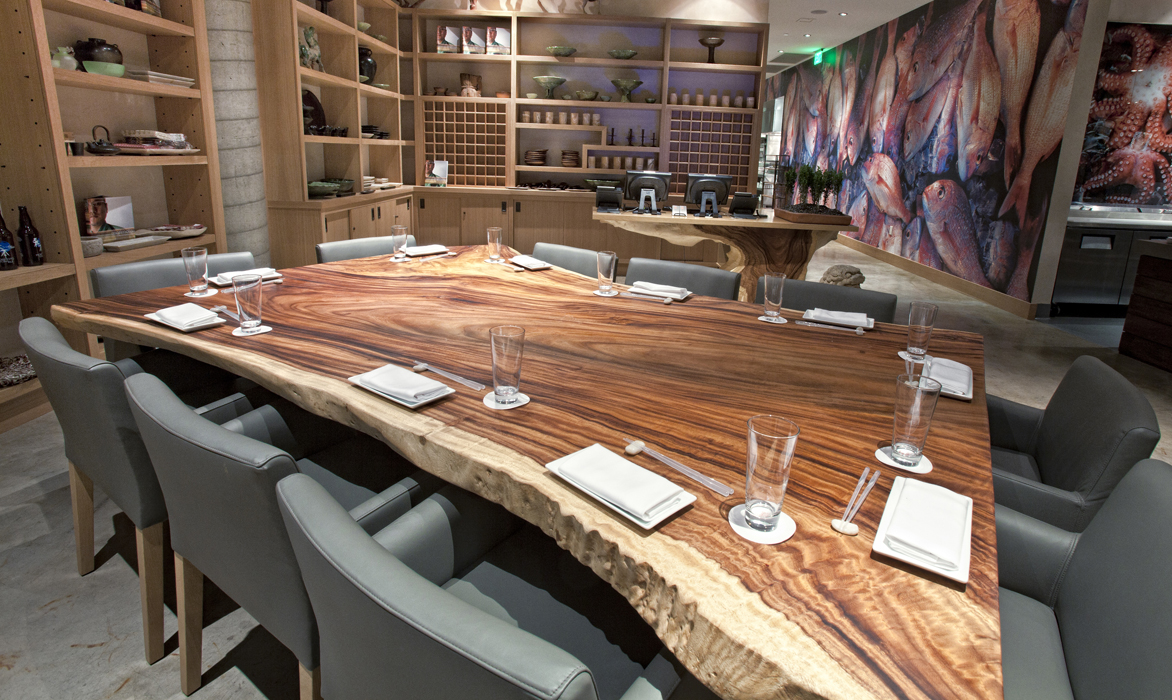



![Layout_Oak[1]](http://www.maxsungroup.com/wp-content/uploads/2016/05/Layout_Oak1-300x115.jpg)







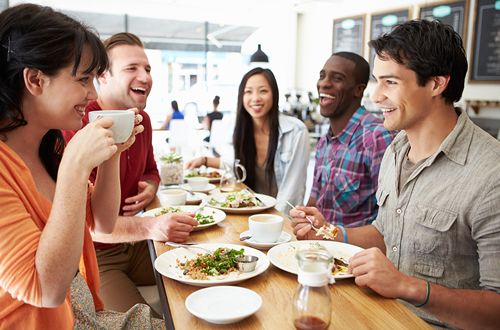






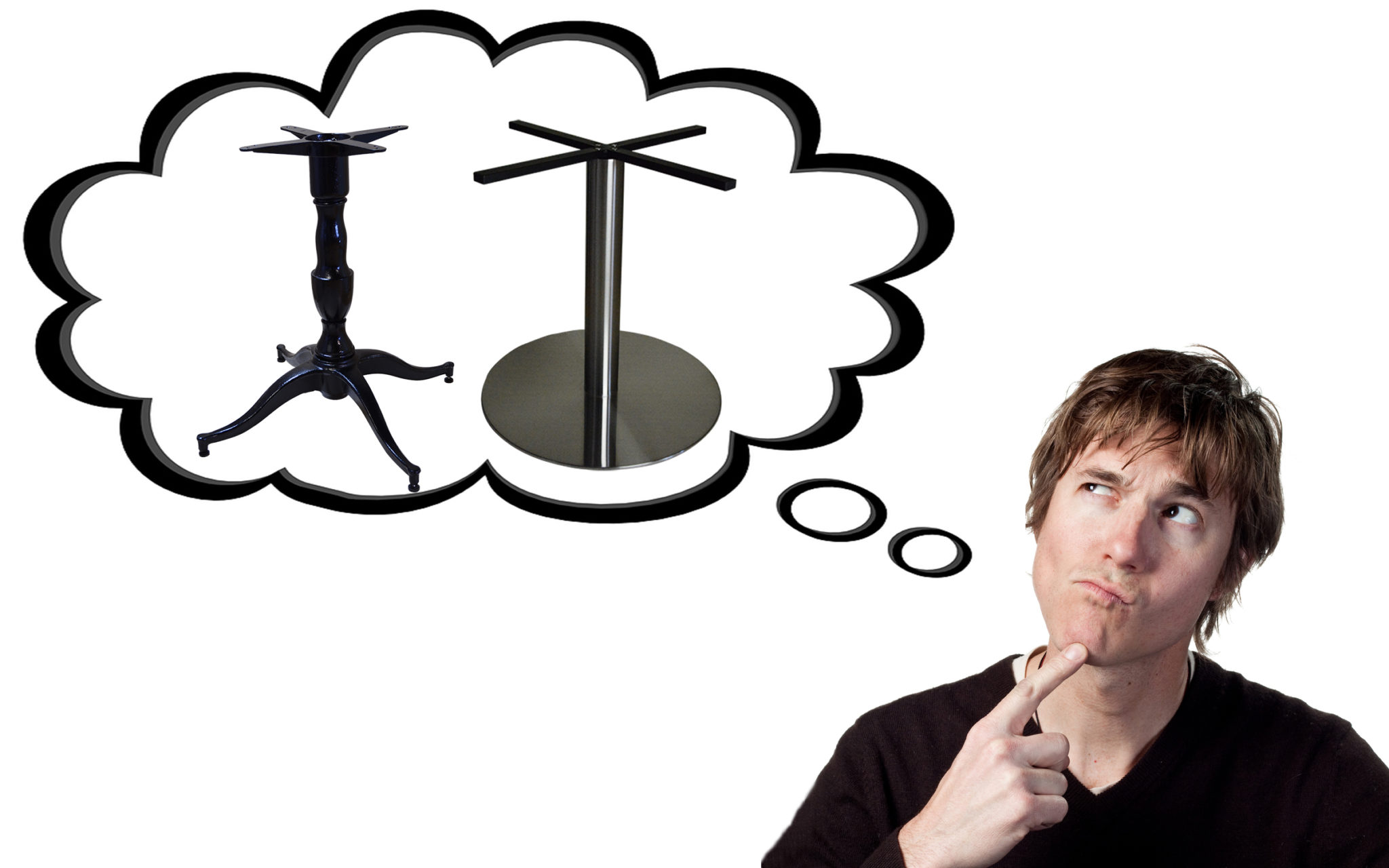








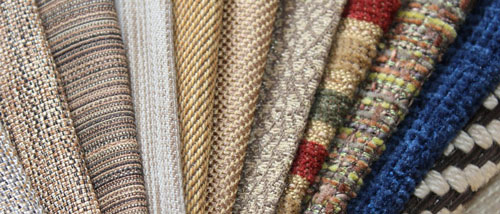




 The threaded mechanisms of the base include the center rod which keeps the base parts together. The three parts of almost every base includes the base bottom, column and spider. The center rod begins at the base bottom that rests on the floor, through the column in the middle, and is tightened on the other side of the spider, the part which attaches to the table tops. As with the glides, constant rigorous movement against the floor may loosen this bolt and cause a wobbly base. A preventative measure is to pick up the tables to move them, but the base can be fixed if necessary.
The threaded mechanisms of the base include the center rod which keeps the base parts together. The three parts of almost every base includes the base bottom, column and spider. The center rod begins at the base bottom that rests on the floor, through the column in the middle, and is tightened on the other side of the spider, the part which attaches to the table tops. As with the glides, constant rigorous movement against the floor may loosen this bolt and cause a wobbly base. A preventative measure is to pick up the tables to move them, but the base can be fixed if necessary.
 To tighten the loosened base, the base will have to be flipped upside down, which will bring the end of the center rod and the nut into view. Before tightening the nut, the bolt head must be secured within the indentions on the bottom side of the bottom base. Also, the column should line up within the indentions on the base and spider wherein the base fits securely. At this point, the nut can be tightened. The simplest method is to prop up the bolt from the floor with a wedge and often you’ll find you can use a tire iron to tighten the nut effectively.
Not all bases are created equally, and neither are they connected to table tops the same way. For stone table tops, it is necessary to adhere a wood block with industrial adhesive to the underside of the stone and then attach the table base to the block with screws. Here, the weight of the table may create a situation where it is difficult to lift the table with ease. Unfortunately, if the table screws rip from the block, there will a more complicated fix that perhaps will not yield the best results. If the screws rip from the wood block, the block may be left unusable. The block will then have to be removed and another one will have to be adhered. This may cause problems as the block is already at the center of the weight distribution. The industrial adhesive may make it too difficult to remove the old block entirely.
In the interest of maintaining a long lasting table, it is very important to always lift tables before moving them. Sliding them may cause problems down the road that taking the time to lift the heavy table can prevent easily. The best solutions are preventative, and certainly lifting tables to move them is a solution to preventing problems down the road.
To tighten the loosened base, the base will have to be flipped upside down, which will bring the end of the center rod and the nut into view. Before tightening the nut, the bolt head must be secured within the indentions on the bottom side of the bottom base. Also, the column should line up within the indentions on the base and spider wherein the base fits securely. At this point, the nut can be tightened. The simplest method is to prop up the bolt from the floor with a wedge and often you’ll find you can use a tire iron to tighten the nut effectively.
Not all bases are created equally, and neither are they connected to table tops the same way. For stone table tops, it is necessary to adhere a wood block with industrial adhesive to the underside of the stone and then attach the table base to the block with screws. Here, the weight of the table may create a situation where it is difficult to lift the table with ease. Unfortunately, if the table screws rip from the block, there will a more complicated fix that perhaps will not yield the best results. If the screws rip from the wood block, the block may be left unusable. The block will then have to be removed and another one will have to be adhered. This may cause problems as the block is already at the center of the weight distribution. The industrial adhesive may make it too difficult to remove the old block entirely.
In the interest of maintaining a long lasting table, it is very important to always lift tables before moving them. Sliding them may cause problems down the road that taking the time to lift the heavy table can prevent easily. The best solutions are preventative, and certainly lifting tables to move them is a solution to preventing problems down the road. 
 Sizing matters in terms of the size of the original table and the extended table. A 30” x 30” may open to a 42” round. A 36” x 36” may open to a 51” round. Another option to consider is the mechanisms in which the drop leaf is propped up.
Sizing matters in terms of the size of the original table and the extended table. A 30” x 30” may open to a 42” round. A 36” x 36” may open to a 51” round. Another option to consider is the mechanisms in which the drop leaf is propped up.
 There are two types of common mechanisms to compare. One is the spring hinge, and the other is a bolt hinge. At Maxsun we focus on the ability for the mechanism to withstand commercial grade use and so highly advise the bolt hinge, as it lasts longer and is the most durable for commercial use. The spring hinge is used in some residential grade drop leaf table tops, but is not recommended for a longer lasting table.
Please note that some applications may not be suitable for the bolt system because it may get in the way of the table base (example: 24″ x 24″ – 36″R)
There are two types of common mechanisms to compare. One is the spring hinge, and the other is a bolt hinge. At Maxsun we focus on the ability for the mechanism to withstand commercial grade use and so highly advise the bolt hinge, as it lasts longer and is the most durable for commercial use. The spring hinge is used in some residential grade drop leaf table tops, but is not recommended for a longer lasting table.
Please note that some applications may not be suitable for the bolt system because it may get in the way of the table base (example: 24″ x 24″ – 36″R)